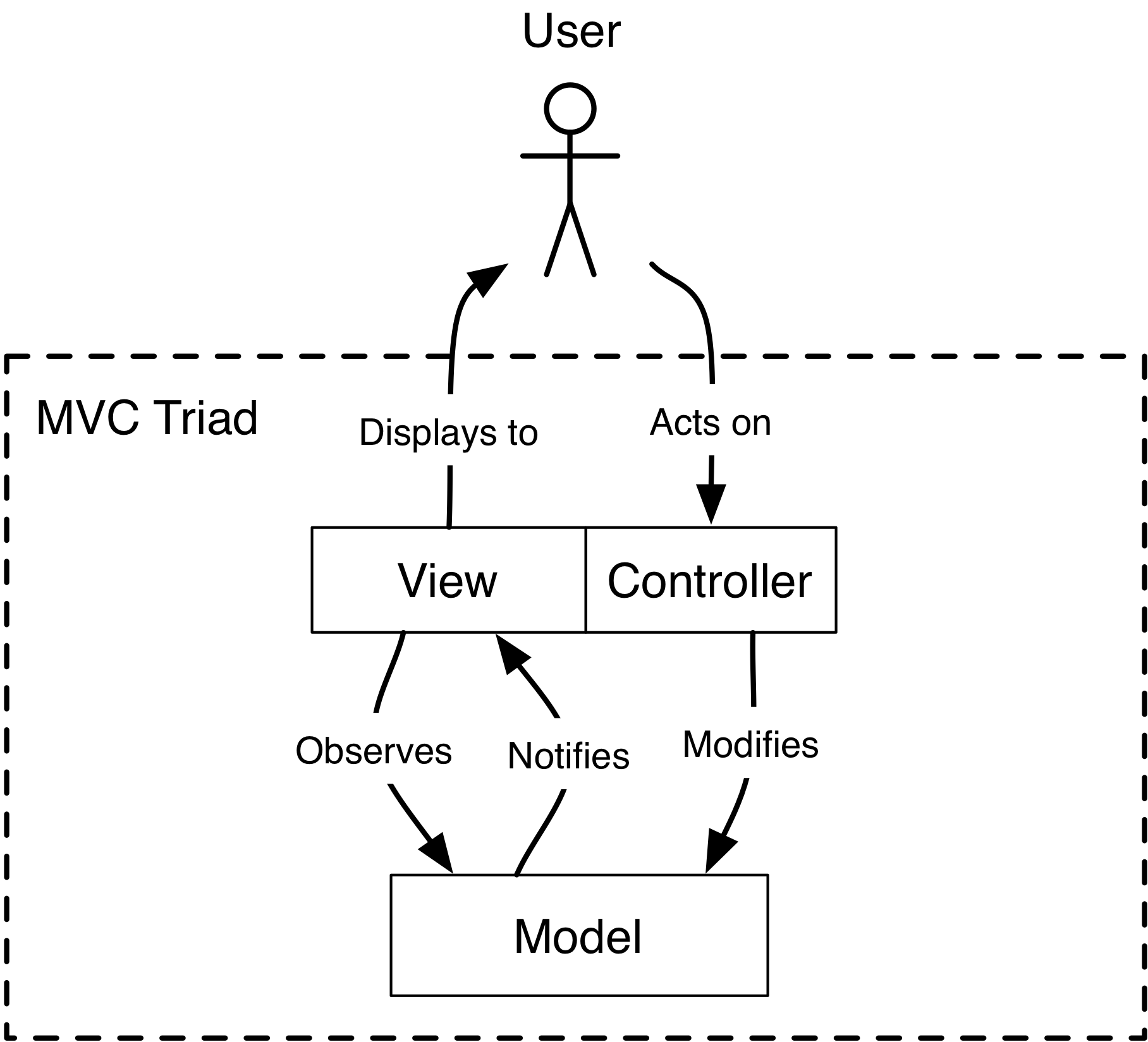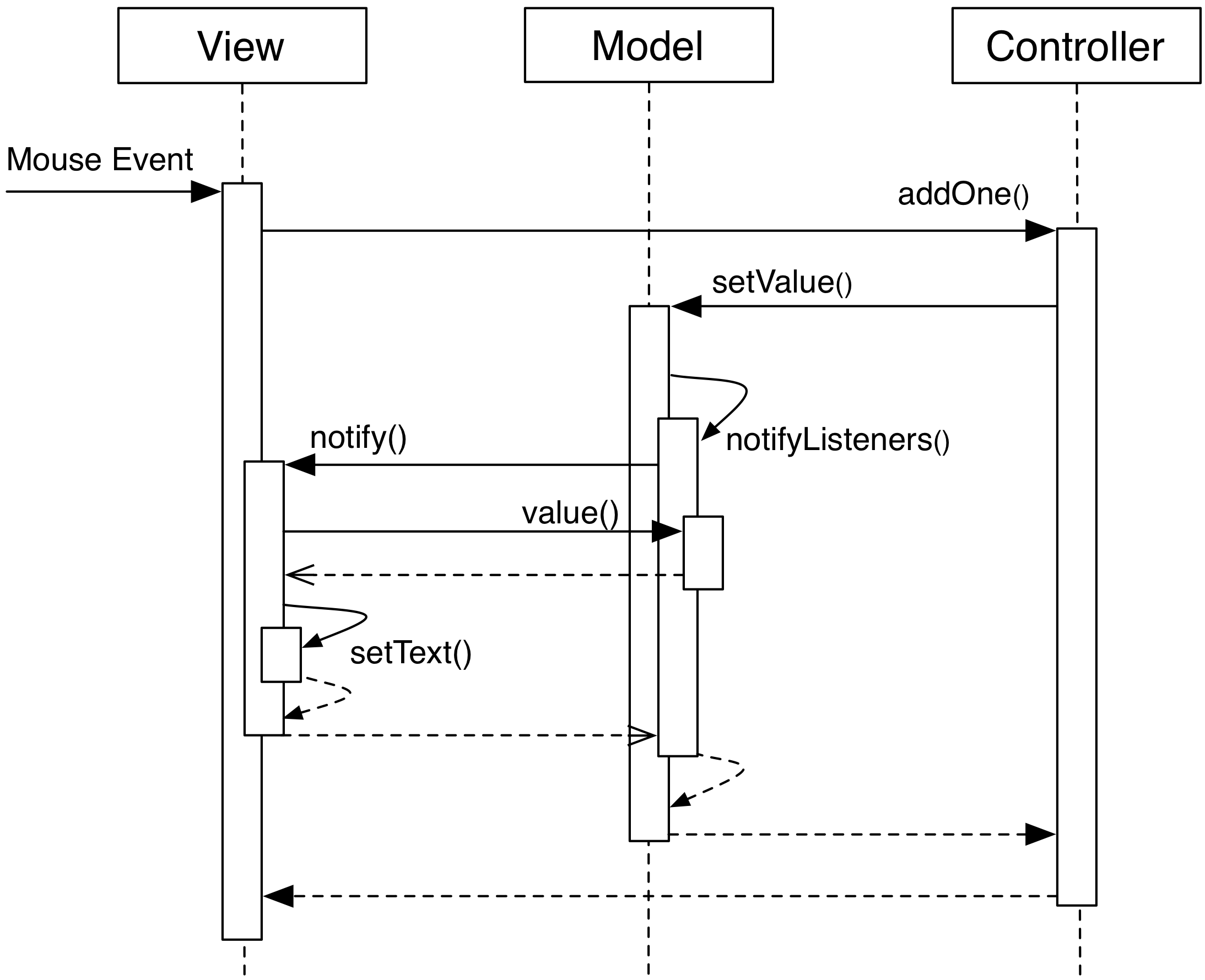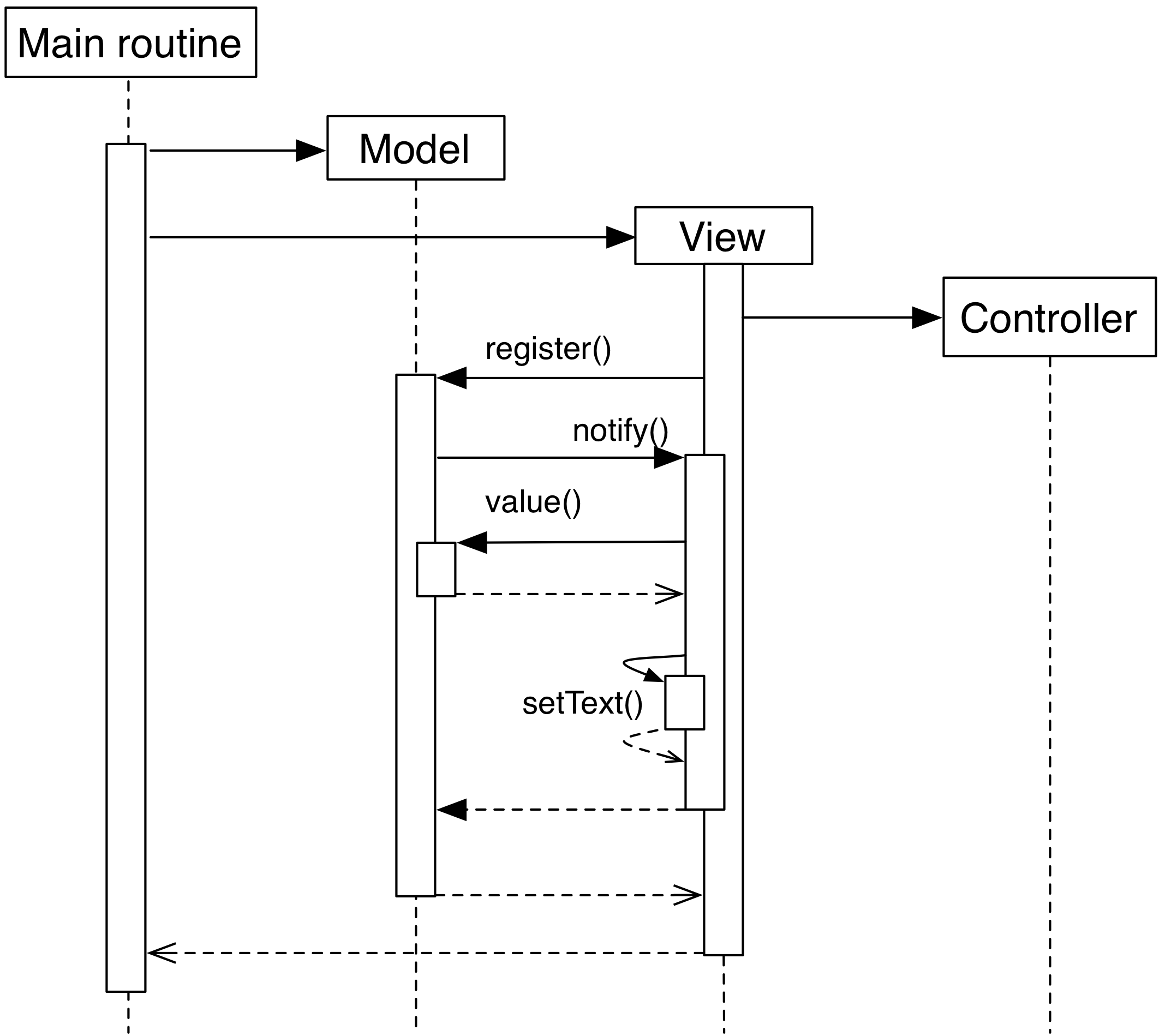1.3 Traditional MVC
With the Document-View design we successfully extracted state from an initial Smart-UI design. The next objective is to extract the code that converts the primary event (in this case, a mouse click on the button) into the execution of the logic that modifies the state (addition of one to the value). The final result of this refactoring will be a Traditional MVC design[^1].
In Traditional MVC, the Document is called Model, and its role and structure is unchanged: it stores state and delivers change notifications. The View part in Document-View is instead removed of some of its responsibilities, that are given to a Controller. Once instantiated and connected, Model, View, and Controller form a so-called MVC triad.

The Controller’s role is to transform primary events delivered by the View into operations on the Model. Depending on the specifics of the application, a Controller may or may not need a reference to the View, but it certainly needs the Model to apply changes on
class Controller(object):
def __init__(self, model, view):
self._model = model
self._view = view
The method add_one performs the specific task of transforming a primary event
into a Model operation, adding one to the current value. Obviously, the
Controller does so through the Model interface. This operation will trigger a
Model notification to its listeners
class Controller(object):
# ...
def add_one(self):
self._model.value += 1
At initialization, the View instantiates its associated Controller, passing
itself and the Model as parameters. As before, the View registers itself on the
Model via the register method
class View(QtGui.QPushButton):
def __init__(self, model):
super(View, self).__init__()
self._model = model
self._controller = Controller(self._model, self)
self._model.register(self)
The View now depends on the Controller to modify the Model: only strictly
GUI-related handling is done by the View. Conversion from GUI events to
application business logic is delegated to the Controller in
mouseReleaseEvent
class View(QtGui.QPushButton):
# ...
def mouseReleaseEvent(self, event):
super(View, self).mouseReleaseEvent(event)
self._controller.addOne()
def notify(self):
self.setText(unicode(self._model.value()))
Clicking on the View button will result in a call to Controller.add_one, in
turn triggering a call to notify that updates the text label. The activity
diagram shows the dance of calls presented above. Note how the Model-View
synchronization does not involve the Controller

To initialize the MVC triad, the client code needs to create the Model and View, and let them be aware of each other by passing the Model to the View.
app = QtGui.QApplication(sys.argv)
model = Model()
view = View(model)
view.show()
app.exec_()
The activity diagram shows the setup code given above

Note
The more knowledgeable reader may recognize that this MVC model is not the original MVC as intended in its original implementation. We will go into detail of the differences in later chapters. What is presented here is the modern reinterpretation of the original MVC, and the one most likely to be intended when talking about “MVC”. To clarify the overloaded nomenclature, I chose to refer to the original ’70s design as “Reenskaug MVC”, and its modern reinterpretation here presented as “Traditional MVC”. —-